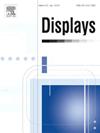Causal perception inspired representation learning for trustworthy image quality assessment
IF 3.7
2区 工程技术
Q1 COMPUTER SCIENCE, HARDWARE & ARCHITECTURE
引用次数: 0
Abstract
Despite great success in modeling visual perception, deep neural network based image quality assessment (IQA) still remains untrustworthy in real-world applications due to its vulnerability to adversarial perturbations. In this paper, we propose to build a trustworthy IQA model via Causal Perception inspired Representation Learning (CPRL). More specifically, we assume that each image is composed of Causal Perception Representation (CPR) and non-causal perception representation (N-CPR). CPR serves as the causation of the subjective quality label, which is invariant to the imperceptible adversarial perturbations. Inversely, N-CPR presents spurious associations with the subjective quality label, which may significantly change with the adversarial perturbations. We propose causal intervention to boost CPR and eliminate N-CPR. Specifically, we first generate a series of N-CPR intervention images, and then minimize the causal invariance loss. Then we propose a SortMask module to reduce Lipschitz and improve robustness. SortMask block small changes around the mean to eliminate N-CPR and can be plug-and-play. Experiments on four benchmark databases show that the proposed CPRL method outperforms many state-of-the-art methods and provides explicit model interpretation. To support reproducible scientific research, we release the code at https://clearlovewl.github.io.
基于因果感知的表征学习用于可信图像质量评估
尽管在视觉感知建模方面取得了巨大成功,但基于深度神经网络的图像质量评估(IQA)在现实应用中仍然不可信,因为它容易受到对抗性扰动的影响。在本文中,我们提出通过因果感知启发的表征学习(CPRL)来构建一个可信的IQA模型。更具体地说,我们假设每个图像由因果感知表征(CPR)和非因果感知表征(N-CPR)组成。CPR作为主观质量标签的原因,它对难以察觉的对抗性扰动是不变的。相反,N-CPR表现出与主观质量标签的虚假关联,这可能会随着对抗性扰动而发生显著变化。我们提出因果干预,以促进CPR和消除N-CPR。具体而言,我们首先生成一系列N-CPR干预图像,然后最小化因果不变性损失。然后,我们提出了SortMask模块来减少Lipschitz并提高鲁棒性。SortMask阻止平均值周围的小变化,以消除N-CPR,并且可以即插即用。在四个基准数据库上的实验表明,CPRL方法优于许多现有的方法,并提供了明确的模型解释。为了支持可重复的科学研究,我们在https://clearlovewl.github.io上发布了代码。
本文章由计算机程序翻译,如有差异,请以英文原文为准。
求助全文
约1分钟内获得全文
求助全文
来源期刊

Displays
工程技术-工程:电子与电气
CiteScore
4.60
自引率
25.60%
发文量
138
审稿时长
92 days
期刊介绍:
Displays is the international journal covering the research and development of display technology, its effective presentation and perception of information, and applications and systems including display-human interface.
Technical papers on practical developments in Displays technology provide an effective channel to promote greater understanding and cross-fertilization across the diverse disciplines of the Displays community. Original research papers solving ergonomics issues at the display-human interface advance effective presentation of information. Tutorial papers covering fundamentals intended for display technologies and human factor engineers new to the field will also occasionally featured.
 求助内容:
求助内容: 应助结果提醒方式:
应助结果提醒方式:


